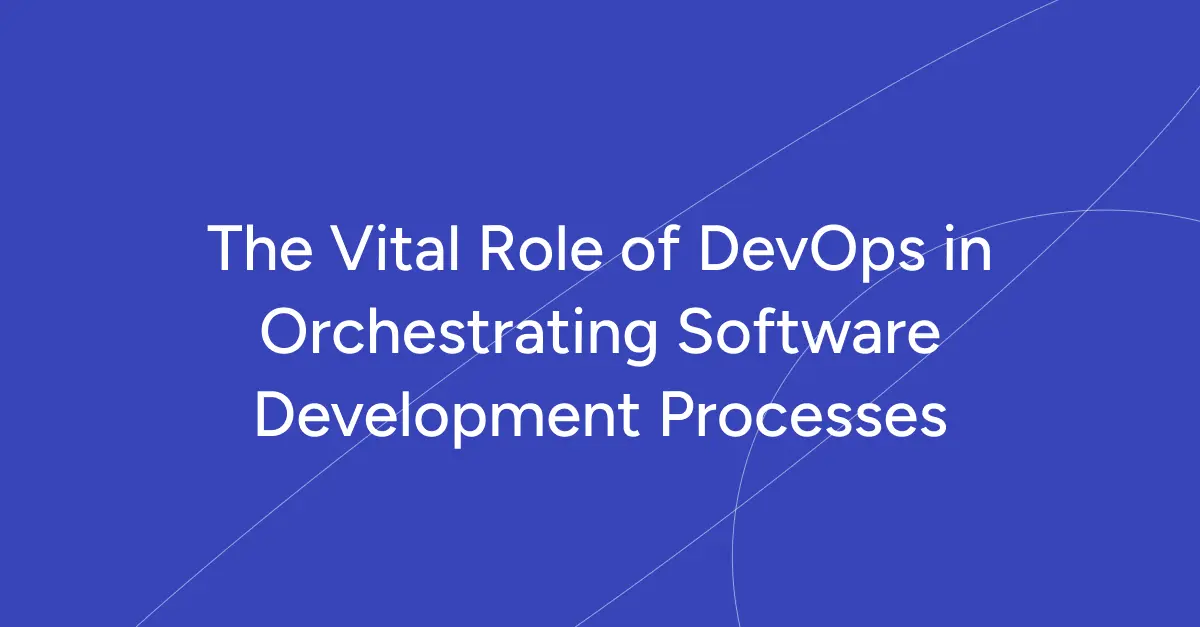
Is your software ready for growth, or will it crumble under pressure?
Businesses are under immense pressure to innovate and grow. While technology is the backbone of these advancements, understanding its intricacies can be a daunting task for non-technical business owners. This is especially true when it comes to complex concepts like scalability.
Scalability is the ability of a system to handle increasing workloads and user demands. Without it, businesses risk experiencing slow performance, system crashes, and ultimately, lost customers. It's the difference between a website that can handle a sudden surge in traffic during a holiday sale and one that crashes under the pressure.
This is where the disciplines of DevOps and Site Reliability Engineering (SRE) come into play. These complementary practices, which have gained significant traction in the tech industry, offer a roadmap for ensuring the scalability and resilience of your digital projects without sacrificing reliability.
This guide dives into how scaling delivers business ROI, the practices that make it possible, and the strategic partnership Gart Solutions provides.
Understanding Scalability
Pilots are easy, but scaling up is hard
Scalability is simply the ability of a system to grow and handle increased demand. Imagine a small restaurant that becomes incredibly popular. If it can't expand its kitchen or seating, it will struggle to serve more customers. A scalable restaurant, on the other hand, can adjust its operations to accommodate the growing crowd.
The consequences of poor scalability can be dire for your business. Imagine your company's website grinding to a halt during a major marketing campaign, frustrating potential customers and causing them to abandon their shopping carts or search for your competitors. Or consider the impact of a critical business application crashing under the strain of increased usage, leading to lost productivity, missed deadlines, and dissatisfied clients.
The consequences of poor scalability extend beyond lost customers and revenue. A system that can't handle increased demand can damage a company's reputation. Major online retailers like Amazon or ticket sales platforms have invested heavily in scalability to prevent these issues during peak shopping periods. They understand that a seamless customer experience is crucial to their success.
Scaling for Success: The Proven Path to Revenue Growth and Cost Savings
Recent research from the Boston Consulting Group (BCG) has shed light on the tangible business benefits of scaling digital solutions. The study, which covered approximately 2,000 global companies, found that scaling individual digital solutions can generate revenue increases of 9% to 25% and cost savings of 8% to 28% compared to the relevant baseline (see Exhibits 2 and 3).
But the real game-changer emerges when companies scale several digital solutions across the enterprise. In these cases, the research indicates that organizations can achieve an enterprise-wide revenue increase of almost 17%, along with a 17% reduction in costs.
Individual digital solutions saw 9–25% revenue growth and 8–28% cost savings
Enterprise-wide scaling resulted in ~17% revenue increase and ~17% cost reduction.
The advantages of scaling digital solutions extend beyond just the financial bottom line. Businesses that successfully scale their digital capabilities also experience qualitative benefits, such as:
Reimagined customer experiences that drive loyalty and satisfaction
Greater ability to integrate digital and data ecosystems for competitive advantage
Stronger business resilience and adaptability to market changes
More inclusive and diverse workplaces that foster innovation
Get a sample of IT Audit
Sign up now
Get on email
Loading...
Thank you!
You have successfully joined our subscriber list.
How DevOps and SRE Practices Enable Scalability
It's a valid question, and one that deserves a clear, practical explanation. Let's dive in and explore the key ways these complementary disciplines can future-proof your technology investments.
Automation
One of the core principles of DevOps is the automation of repetitive tasks, such as software deployment, infrastructure provisioning, and testing. By automating these processes, you can significantly reduce the time and effort required to scale your project. Imagine being able to spin up new servers or deploy the latest version of your application with just a few clicks – that's the power of DevOps automation.
Infrastructure as Code (IaC)
DevOps and SRE emphasize the use of IaC, where your infrastructure is defined and managed using code, rather than manual, error-prone processes. This approach makes it much easier to replicate and scale your infrastructure as your business grows. It's like having a digital blueprint that you can use to quickly and consistently build out new environments.
Continuous Integration and Continuous Deployment (CI/CD)
DevOps practices like CI/CD help to automate the entire build, test, and deployment pipeline. This means that changes to your codebase can be quickly and reliably rolled out to production, supporting faster iterations and scalability. Imagine being able to launch new features or updates without the risk of lengthy downtime or service disruptions.
Monitoring and Observability
SRE places a strong emphasis on monitoring and observability, which are essential for understanding the health and performance of your digital systems. By implementing robust monitoring tools and practices, you can quickly identify bottlenecks, performance issues, and other problems that may arise as you scale your project. This allows you to address challenges proactively, rather than waiting for your customers to experience the impact.
Read more: Monitoring DevOps: Types, Practices, and Tools
Scalable Architecture
DevOps and SRE encourage the adoption of scalable architectural patterns, such as microservices, serverless, and cloud-native approaches. These modern architectural styles make it much easier to scale individual components of your project independently, rather than having to scale the entire system at once. It's like building with Lego blocks – you can add or remove pieces as needed without disrupting the whole structure.
Read more: Cloud Scalability: Horizontal vs. Vertical Scaling of IT Infrastructures
Capacity Planning
SRE practices include proactive capacity planning, where you continuously monitor and forecast the resource requirements of your system. This allows you to scale your infrastructure and resources ahead of time, avoiding sudden spikes in demand that could cause performance issues or service disruptions.
Incident Response and Resilience
DevOps and SRE focus on building resilient systems that can withstand failures and recover quickly. This includes implementing practices like chaos engineering, incident response, and self-healing mechanisms. By making your digital solutions more robust and reliable, you can ensure that they continue to function smoothly even as you scale to meet growing demands.
DevOps vs. SRE: Complementary Strengths for Scaling
AspectDevOpsSREApproachCulture + automation toolsReliability engineering with metricsScalability EnablementCI/CD, IaCCapacity planning, error budgets, resiliencyGoalFast, consistent releasesReliable operation during growthFocusDevelopment process optimizationSystem availability and error management
By adopting these DevOps and SRE practices, you can unlock the true scalability of your digital projects, empowering your business to adapt and thrive in the face of changing market conditions and customer needs. It's a strategic investment that will pay dividends for years to come.
Key considerations for scalability:
Vertical scaling: Increasing resources of existing hardware (e.g., CPU, RAM).
Horizontal scaling: Adding more servers or instances to distribute the load.
Load balancing: Distributing incoming traffic across multiple servers.
Caching: Storing frequently accessed data for faster retrieval.
Database optimization: Improving database performance to handle increased data volume.
Cloud computing: Leveraging elastic resources for on-demand scalability.
Understanding your business needs is the first step. What challenges are you facing? Are you looking to accelerate development, improve system reliability, or optimize costs? Having a clear picture of your requirements will help you find a partner that aligns with your objectives.
The capacity to scale your digital solutions is no longer a nice-to-have – it's a strategic imperative. The companies that master this art will be well-positioned to outpace the competition, capitalize on growth opportunities, and future-proof their success.
The choice is clear: you can continue to rely on outdated, manually intensive processes that put your business at risk of performance issues, service disruptions, and lost revenue, or you can invest in the proven practices that will transform your digital operations and position your company for sustainable growth.
How Gart Solutions Drives Scalable Performance
Gart combines consulting and hands-on delivery across:
Automation services: IaC with Terraform, CI/CD pipelines
Observability platforms: Prometheus, Grafana, CloudWatch setups
Architecture design: Microservices, container orchestration (ECS/EKS)
Capacity forecasting: Scaling planning, cloud resource optimization
Incident readiness: Auto‑remediation, runbook development, SRE coaching
Scale your business without limits. Contact Gart today.

In this article, I want to delve into the role of DevOps in the Software Development Life Cycle (SDLC) and explore how DevOps practices contribute to the creation of higher-quality products faster and even more cost-effectively.
[lwptoc]
So, at which stage of the product lifecycle do you need DevOps? Let's try to unravel this.
Where DevOps Fits in the Product Journey?
It's remarkable how DevOps expertise is essential both in the initial stages of product creation and during its scaling, as well as for process optimization or modernization.
Project Kickoff
Introduce DevOps from the very beginning to establish an efficient workflow. At this stage, DevOps helps foster collaboration between development and operations, promoting team cohesion and rapid product development.
Scaling
DevOps acts as a key element for successful project scaling, ensuring efficiency and reliability amid growing demands and workloads. It provides automated infrastructure management processes, allowing for resource efficiency as the workload increases. Continuous Integration (CI) and Continuous Deployment (CD) enable swift implementation of changes to the product.
This becomes particularly crucial when expanding a project, requiring rapid infrastructure scaling and ensuring high availability.
System Transformation
DevOps facilitates the modernization and optimization of existing systems, contributing to the transformation of legacy systems. At this stage, it supports the adoption of new practices and technologies to simplify system management and support.
DevOps in the World of SDLC
Attempting to map DevOps onto the phases of SDLC might look something like this:
Planning: Collaborative planning and requirement gathering.
Coding: Development of code with a focus on collaboration.
Building: Automated compilation and build processes.
Testing: Continuous testing practices for early bug detection.
Deployment: Automated deployment for rapid and reliable releases.
Monitoring: Continuous monitoring of application and infrastructure performance.
How do DevOps practices help create better products?
Product Quality
DevOps ensures product quality through the use of Continuous Integration/Continuous Deployment (CI/CD) pipelines and automated testing. CI/CD automates the processes of code integration and its secure deployment into production environments.
Impact: Swift detection and correction of errors, ensuring continuous improvement and delivery of the software product.
Automated testing allows the execution of tests automatically, ensuring stability and reliability of the software code.
Impact: Ensuring high product quality, rapid detection and resolution of defects, and overall improvement of software reliability.
DevOps employs these practices to create efficient, fast, and reliable development processes, promoting high product quality and user satisfaction.
💡Our projects:
▪ CI/CD Pipelines and Infrastructure for E-Health Platform
▪ AWS Cost Optimization and CI/CD Automation for Entertainment Software Platform
▪ Building a Robust CI/CD Pipeline for Cybersecurity Company
Change Agility
DevOps ensures flexibility through Infrastructure as Code (IaC) and automated rollback mechanisms.
IaC involves managing and deploying infrastructure using code.
Impact: Ensuring speed and consistency in deployment, simplifying changes, and working with infrastructure.
Utilizing automated tools for rolling back changes in case of incorrect deployment or issues.
Impact: Reducing the risk and time of system recovery in case of adverse consequences, ensuring environment stability.
💡Our projects:
▪ Infrastructure as Code Implementation for a Seamless Web App Development Lifecycle
▪ A DevOps Overhaul with Infrastructure as Code for a LATAM FinTech Powerhouse
▪ AWS Migration, Infrastructure Localization, and Cloud Excellence for a Global Sportsbook Platform
Smooth Product Launch
DevOps enables the gradual introduction of new features, reducing risks, and ensuring system stability. This is made possible through 'Blue-Green Deployments' and 'Canary Releases.'
Blue-Green Deployments: Systems alternate between two separate environments - the 'blue' (active) and 'green' (new).
Impact: Ensuring system continuity, the ability to roll back to the previous version in case of issues.
Canary Releases: Gradual deployment of a new version to a limited subset of users or servers to validate its functionality.
Impact: Risk minimization, rapid issue detection, phased deployment to reduce the impact on users.
💡Our projects:
▪ DevOps for Fashion Circularity Web App
▪ Implementation of Nomad Cluster for Massively Parallel Computing
Budget Control
Implementing the following DevOps practices ensures effective resource and budget management, leading to optimal cost utilization and high product quality.
Automation
Utilizing automated processes for quick and efficient resource utilization.
Impact: Reducing manual operations, saving time and money, and avoiding errors.
Resource Optimization
Continuous monitoring and optimization of resource utilization, considering project needs.
Impact: Ensuring efficient resource utilization, achieving maximum productivity with minimal costs.
Effective Infrastructure Management
Strategic management to ensure high productivity and project compliance.
Impact: Improving infrastructure stability and reliability, as well as precise project-specific planning.
💡Our projects:
▪ Optimizing Costs and Operations for Cloud-Based SaaS E-Commerce Platform
▪ Azure Cost Optimization for a Software Development Company
Stable Product
DevOps helps anticipate and address potential issues, ensuring automated responses to changes in workload. Product stability is maintained through monitoring and alerts for proactive issue resolution and automated scaling based on demand.
Monitoring and Alerts
Continuous monitoring of system parameters and automatic alerts upon detecting anomalies or issues.
Impact: Ensuring a proactive response to problems before they impact performance and swift issue resolution.
Automated Scaling (On-Demand)
Automatic adjustment of resource volumes based on workload or demand.
Impact: Ensuring optimal resource efficiency, maximizing productivity, and cost savings.
💡Our projects:
▪ Cloud-Agnostic Kubernetes Solution with Advanced Monitoring Capabilities
▪ Telecom SaaS: Monitoring-Driven GCP Optimization and Infrastructure Modernization
▪ Sustainable Threads, Sustainable Code: Gart's Monitoring-Enabled DevOps Excellence
I hope I've managed to convince you that DevOps is a journey worth taking.

In this blog post, we delve into the world of CI/CD tools, uncovering the game-changing potential of these tools in accelerating your software delivery process.
[lwptoc]
Discover the top CI/CD tools and learn from real-life case studies where Gart, a trusted industry leader, has successfully implemented CI/CD pipelines and infrastructure for e-health and entertainment software platforms. Get inspired by their achievements and gain practical insights into optimizing your development process.
CI/CD Tools Table
CI/CD ToolDescriptionLanguage SupportIntegrationDeploymentJenkinsOpen-source automation serverExtensive support for multiple languagesWide range of plugins availableFlexible deployment optionsGitLab CI/CDIntegrated CI/CD solution within GitLabWide language supportSeamless integration with GitLab repositoriesFlexible deployment optionsCircleCICloud-based CI/CD platformSupport for various languages and frameworksIntegrates with popular version control systemsSupports deployment to multiple environmentsTravis CICloud-based CI/CD service for GitHub projectsWide language supportTight integration with GitHubEasy deployment to platforms like Heroku and AWSAzure DevOps (Azure Pipelines)Comprehensive development tools by MicrosoftExtensive language supportIntegrates with Azure servicesDeployment to Azure cloud and on-premisesTeamCityCI/CD server developed by JetBrainsSupports various build and test runnersIntegrates with JetBrains IDEs and external toolsSupports flexible deployment strategiesA comparison table for some popular CI/CD tools
Case Studies: Achieving Success with Gart
CI/CD Pipelines and Infrastructure for E-Health Platform
Gart collaborated with an e-health platform to revolutionize their software delivery process. By implementing robust CI/CD pipelines and optimizing the underlying infrastructure, Gart helped the platform achieve faster releases, improved quality, and enhanced scalability.
AWS Cost Optimization and CI/CD Automation for Entertainment Software Platform
Another notable case study involves Gart's partnership with an entertainment software platform, where they tackled the dual challenges of AWS cost optimization and CI/CD automation. Gart's expertise resulted in significant cost savings by optimizing AWS resources, while simultaneously streamlining the software delivery process through efficient CI/CD pipelines. Learn more about this successful collaboration here.
These case studies highlight Gart's prowess in tailoring CI/CD solutions to diverse industries and our ability to drive tangible benefits for their clients. By leveraging Gart's expertise, you can witness firsthand how CI/CD implementation can bring about remarkable transformations in software delivery processes.
Looking for CI/CD solutions? Contact Gart for comprehensive expertise in streamlining your software delivery process.
The Ultimate CI/CD Tools List
CI/CD (Continuous Integration/Continuous Deployment) tools are software solutions that help automate the process of building, testing, and deploying software applications. These tools enable development teams to streamline their workflows and deliver software updates more efficiently. Here are some popular CI/CD tools:
Jenkins
Jenkins is an open-source automation server that is widely used for CI/CD. It offers a vast array of plugins and integrations, allowing teams to build, test, and deploy applications across various platforms.
GitLab CI/CD
GitLab provides an integrated CI/CD solution within its platform. It enables teams to define pipelines using a YAML configuration file and offers features such as automatic testing, code quality checks, and deployment to various environments.
CircleCI
CircleCI is a cloud-based CI/CD platform that supports continuous integration and delivery. It provides a simple and intuitive interface for configuring pipelines and offers extensive support for a wide range of programming languages and frameworks.
Travis CI
Travis CI is a cloud-based CI/CD service primarily designed for projects hosted on GitHub. It offers a straightforward setup process and provides a range of features for building, testing, and deploying applications.
Azure DevOps
Azure DevOps is a comprehensive set of development tools provided by Microsoft. It includes Azure Pipelines, which allows teams to define and manage CI/CD pipelines for their applications. Azure Pipelines supports both cloud and on-premises deployments.
? Read more: CI/CD Pipelines and Infrastructure for E-Health Platform
Bamboo
Bamboo is a CI/CD server developed by Atlassian. It integrates well with other Atlassian products like Jira and Bitbucket. Bamboo offers features such as parallel builds, customizable workflows, and easy integration with external tools.
TeamCity
TeamCity is a CI/CD server developed by JetBrains. It supports a variety of build and test runners and offers a user-friendly interface for managing pipelines. TeamCity also provides advanced features like code coverage analysis and build chain visualization.
GoCD
GoCD is an open-source CI/CD tool that provides advanced workflow modeling capabilities. It enables teams to define complex pipelines and manage dependencies between different stages of the software delivery process.
Buddy
Buddy is a CI/CD platform that offers a free plan for small projects. It provides a user-friendly interface and supports a wide range of programming languages, making it suitable for developers of all levels.
Drone
Drone is an open-source CI/CD platform that is highly flexible and scalable. It allows you to define your pipelines using a simple YAML configuration file and integrates with popular version control systems.
Strider
Strider is an open-source, customizable CI/CD platform that supports self-hosting. It offers features like parallel testing, deployment, and notification plugins to enhance your software delivery process.
Semaphore
Semaphore is a cloud-based CI/CD platform that provides a free tier for small projects. It supports popular programming languages and offers a simple and intuitive interface for configuring and managing your pipelines.
Concourse CI
Concourse CI is an open-source CI/CD system that focuses on simplicity and scalability. It provides a declarative pipeline configuration and supports powerful automation capabilities.
Codeship
Codeship is a cloud-based CI/CD platform that offers a free tier for small projects. It provides a simple and intuitive interface, supports various programming languages, and integrates with popular version control systems.
Ready to supercharge your software delivery? Contact Gart today and leverage our expertise in CI/CD to optimize your development process. Boost efficiency, streamline deployments, and stay ahead of the competition.
Bitbucket Pipelines
Bitbucket Pipelines is a CI/CD solution tightly integrated with Atlassian's Bitbucket. It enables you to define and execute pipelines directly from your Bitbucket repositories, offering seamless integration and easy configuration.
Wercker
Wercker is a cloud-based CI/CD platform that offers container-centric workflows. It provides seamless integration with popular container platforms like Docker and Kubernetes, enabling you to build, test, and deploy containerized applications efficiently.
Nevercode
Nevercode is a mobile-focused CI/CD platform that specializes in automating the build, testing, and deployment of mobile applications. It supports both iOS and Android development and provides a range of mobile-specific features and integrations.
Spinnaker
Spinnaker is an open-source multi-cloud CD platform that focuses on deployment orchestration. It enables you to deploy applications to multiple cloud providers with built-in support for canary deployments, rolling updates, and more.
Buildbot
Buildbot is an open-source CI/CD framework that allows you to automate build, test, and release processes. It provides a highly customizable and extensible architecture, making it suitable for complex CI/CD workflows.
Harness
Harness is a CI/CD platform that emphasizes continuous delivery and feature flagging. It offers advanced deployment strategies, observability, and monitoring capabilities to ensure smooth and reliable software releases.
IBM UrbanCode
IBM UrbanCode is an enterprise-grade CI/CD platform that provides end-to-end automation and release management. It offers features like environment management, deployment automation, and release coordination for complex enterprise applications.
Perforce Helix
Perforce Helix is a CI/CD and version control platform that supports large-scale development and collaboration. It provides a range of tools for source control, build automation, and release management.
Bitrise
Bitrise is a CI/CD platform designed specifically for mobile app development. It offers an extensive library of integrations, enabling you to automate workflows for building, testing, and deploying iOS and Android apps.
Codefresh
Codefresh is a cloud-native CI/CD platform built for Docker and Kubernetes workflows. It offers a visual pipeline editor, seamless integration with container registries, and advanced deployment features for modern application development.
CruiseControl
CruiseControl is an open-source CI tool that focuses on continuous integration. It provides a framework for automating builds, tests, and releases, and supports various build tools and version control systems.
These are just a few examples of popular CI/CD tools available in the market. The choice of tool depends on various factors such as project requirements, team preferences, and integration capabilities with other tools in your software development stack.
Exploring the Power of AWS CI/CD Tools
AWS (Amazon Web Services) offers a range of CI/CD tools and services to streamline software delivery. Here are some popular AWS CI/CD tools:
AWS CodePipeline: CodePipeline is a fully managed CI/CD service that enables you to automate your software release process. It integrates with other AWS services, such as CodeCommit, CodeBuild, and CodeDeploy, to build, test, and deploy your applications.
AWS CodeBuild: CodeBuild is a fully managed build service that compiles your source code, runs tests, and produces software packages. It supports various programming languages and build environments and integrates with CodePipeline for automated builds.
AWS CodeDeploy: CodeDeploy automates the deployment of applications to instances, containers, or serverless environments. It provides capabilities for blue/green deployments, automatic rollback, and integration with CodePipeline for streamlined deployments.
AWS CodeCommit: CodeCommit is a fully managed source control service that hosts Git repositories. It provides secure and scalable version control for your code and integrates seamlessly with other AWS CI/CD tools.
AWS CodeStar: CodeStar is a fully integrated development environment (IDE) for developing, building, and deploying applications on AWS. It combines various AWS services, including CodePipeline, CodeBuild, and CodeDeploy, to provide an end-to-end CI/CD experience.
These AWS CI/CD tools offer powerful capabilities to automate and streamline your software delivery process on the AWS platform. Each tool can be used independently or combined to create a comprehensive CI/CD pipeline tailored to your application requirements.
Conclusion
CI/CD tools have become indispensable in modern software development, enabling teams to streamline their delivery process, improve efficiency, and achieve faster time to market. Throughout this article, we have explored a wide range of CI/CD tools, both free and enterprise-grade, each offering unique features and capabilities. From popular options like Jenkins, GitLab CI/CD, and CircleCI to specialized tools for mobile app development and container-centric workflows, there is a tool to fit every project's requirements.
Now is the time to embark on your CI/CD journey and leverage the power of these tools. Evaluate your project requirements, explore the tools discussed in this article, and consider partnering with experts like Gart to guide you through the implementation process. Embrace the CI/CD revolution and unlock the full potential of your software development process.
Unlock agility in development! Our DevOps Consulting Services ensure faster releases, robust security, and efficient collaboration. Ready to elevate your software game? Connect with us now
 Achieve Faster Development Cycles
Achieve Faster Development Cycles
 Choose cost-effective development practices
Choose cost-effective development practices
 Make Security a Priority from the Start
Make Security a Priority from the Start
 Enhance Collaboration and Communication
Enhance Collaboration and Communication
 Implement Continuous Integration and Delivery
Implement Continuous Integration and Delivery
 Improve Scalability and Resilience
Improve Scalability and Resilience













